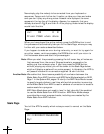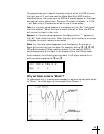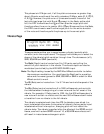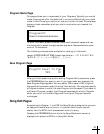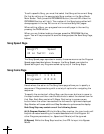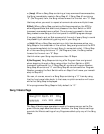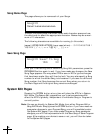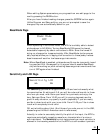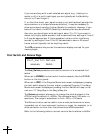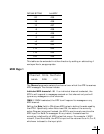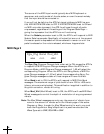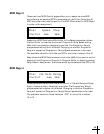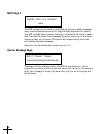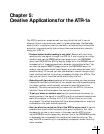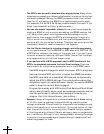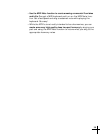
32
If you are working with a well-isolated solo signal (e.g., tracking in a
studio or off of a multi-track tape) you can typically set the Sensitivity
control to 10 and forget it.
If, on the other hand, your signal is noisy or not well-isolated (as might be
more common in a live performance situation), it may be necessary to
allow more signal variation (higher Sensitivity numbers). However, if you
back off too much, the ATR-1a’s ability to detect pitch may be affected.
As a rule, you should start with settings of about 7 to 10. If you want to
detect only highly stable sounds in low-noise conditions, settings of from 2
to 5 may be appropriate. If there is ambient noise or other interfering
sounds, try settings of from 15 to 20. Values close to zero or 25 are ex-
treme, and will typically not do anything useful.
The LCD parameter lets you set the maximum display contrast for your
viewing angle.
Foot Switch and Detune Page
Foot_Switch Detune
aaaaaa bbbb
The Foot_Switch parameter controls the function of a connected foot
switch.
When set to BYPASS, the foot switch functions exactly like the BYPASS
button on the front panel.
When set to STEP, if the Program Mode main screen is displayed, pressing
the foot switch steps to the next higher numbered Program. If the Song
Mode main screen is displayed, pressing the Foot Switch will step to the
next non-”0” Song Step in the Song’s Step List.
The Detune parameter allows you to change the pitch standard of the
ATR-1a from the default A = 440Hz. The values are cents (100 cents = a
semitone). The range of adjustment is from -100 to +100 cents.
The Detune function can be used to tune a vocal performance to some
irreparably out-of-tune instrument (a piano or organ, for example), or to
allow correction to other than the conventional 440Hz standard.
Refer to the following table to convert cents to Hertz relative to 440Hz.



